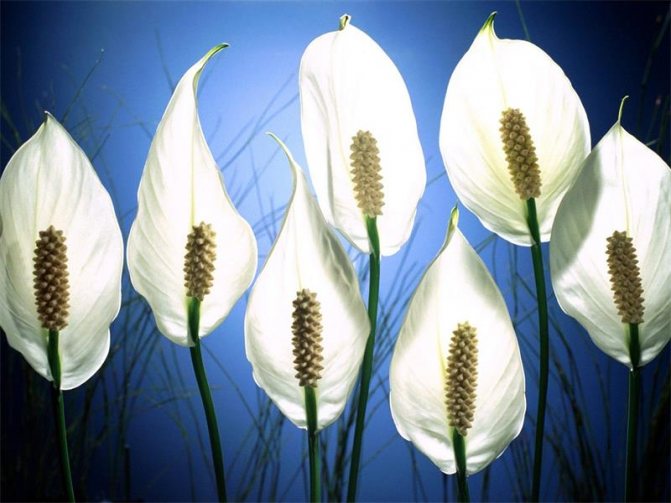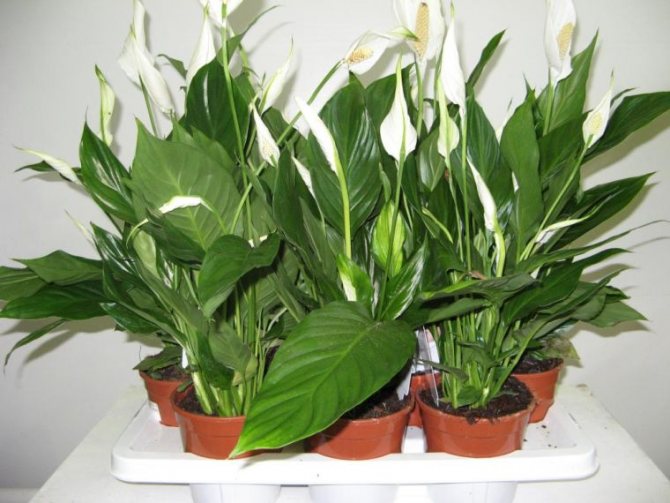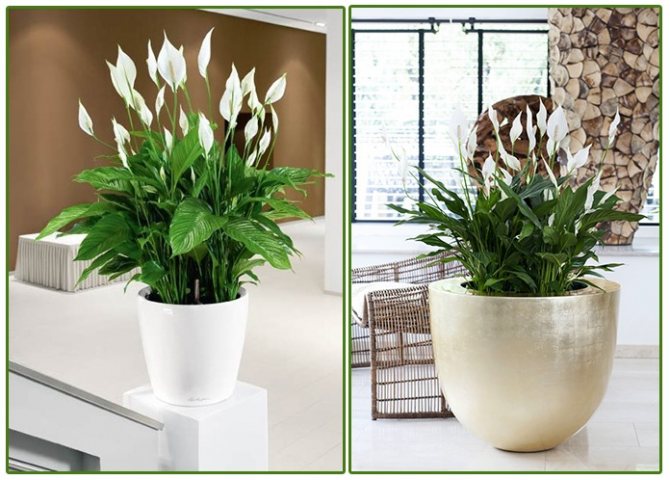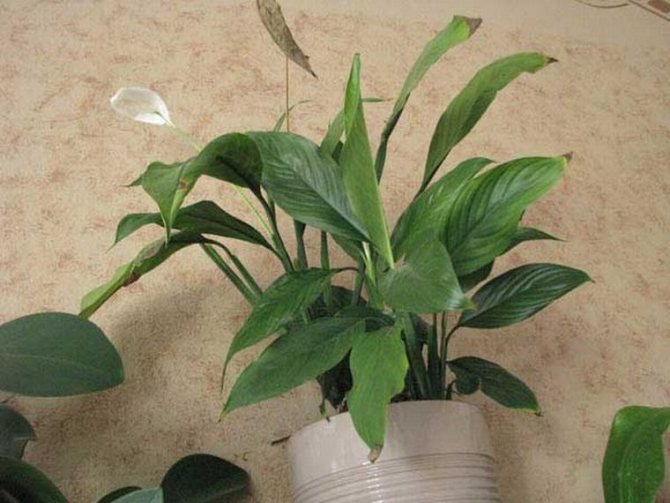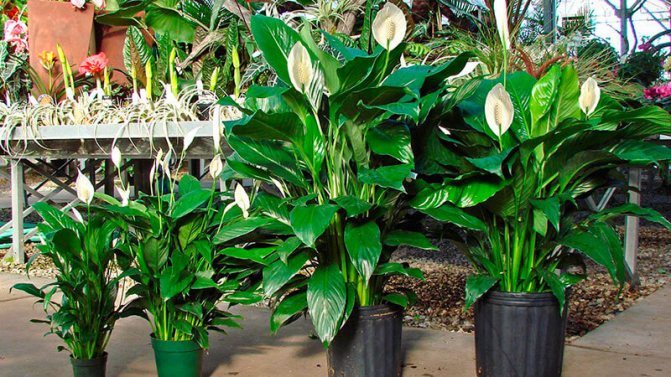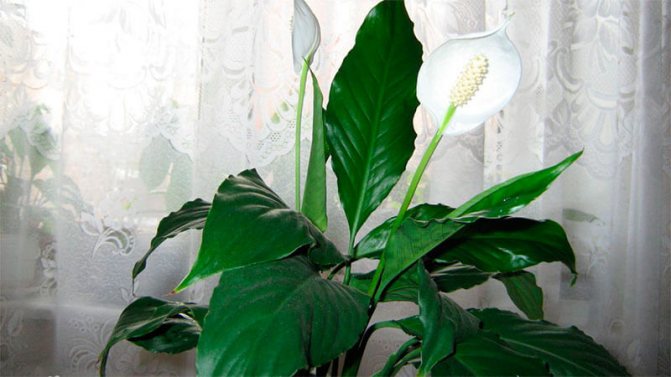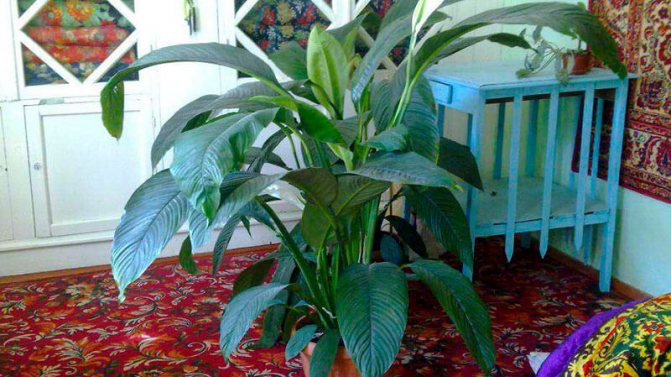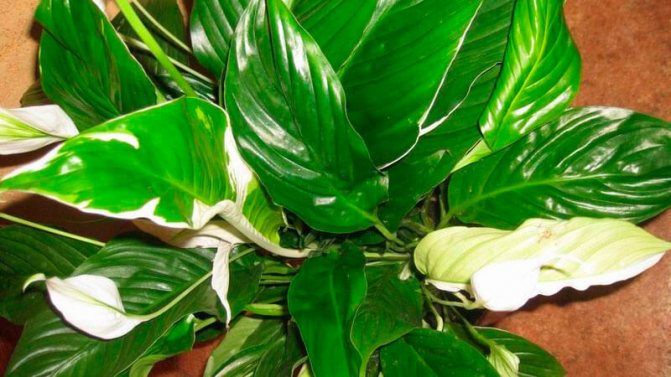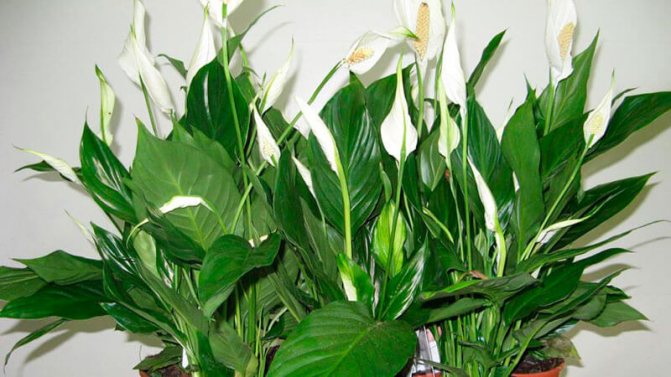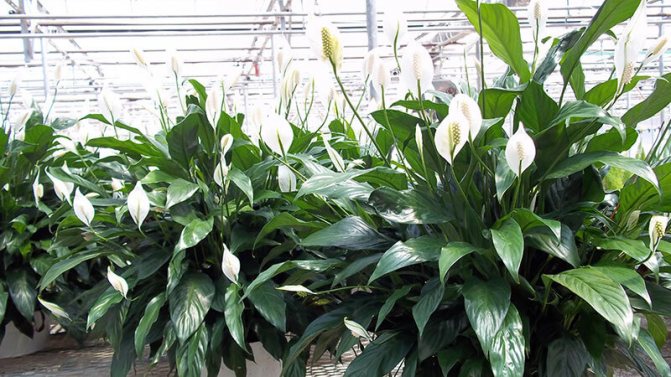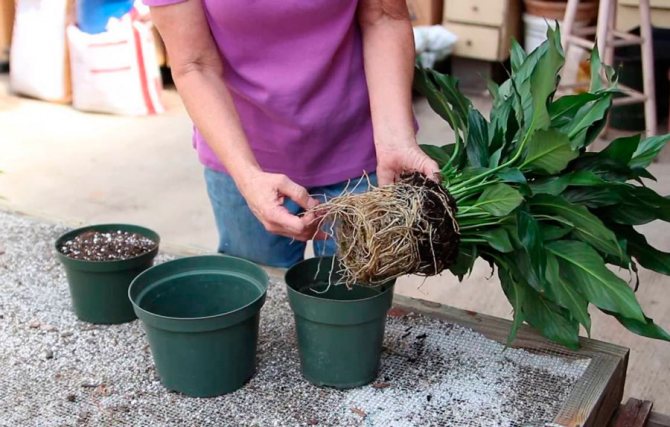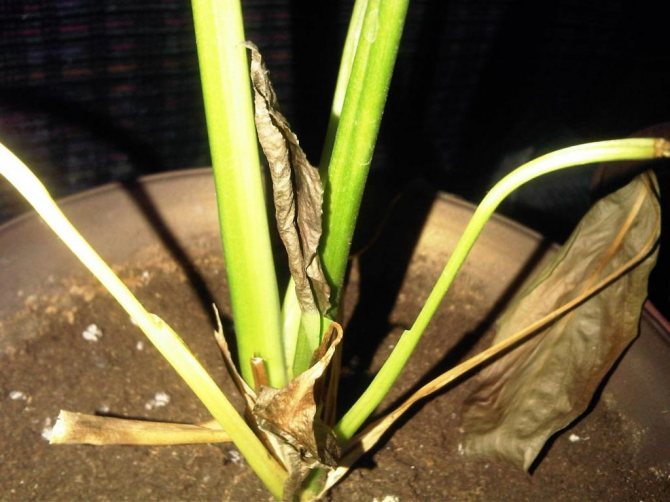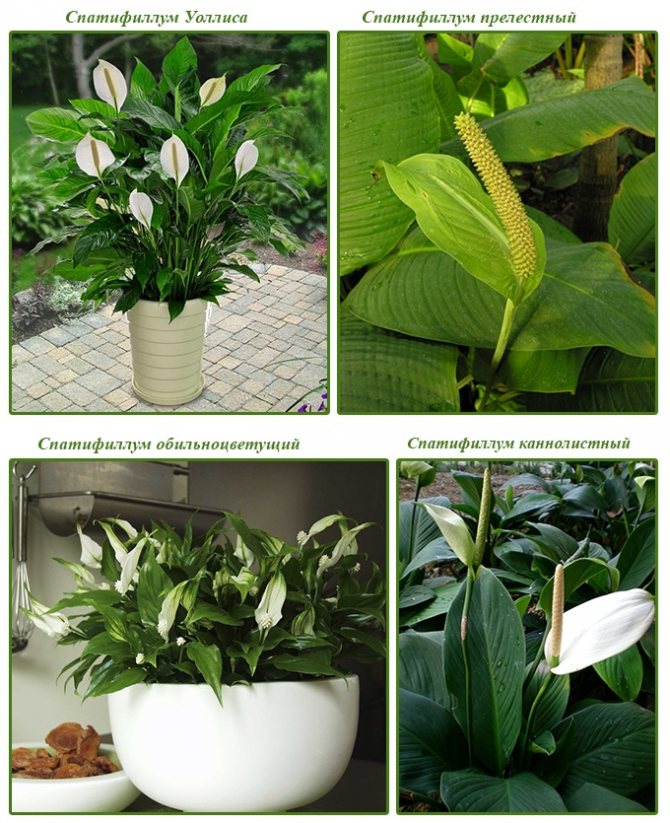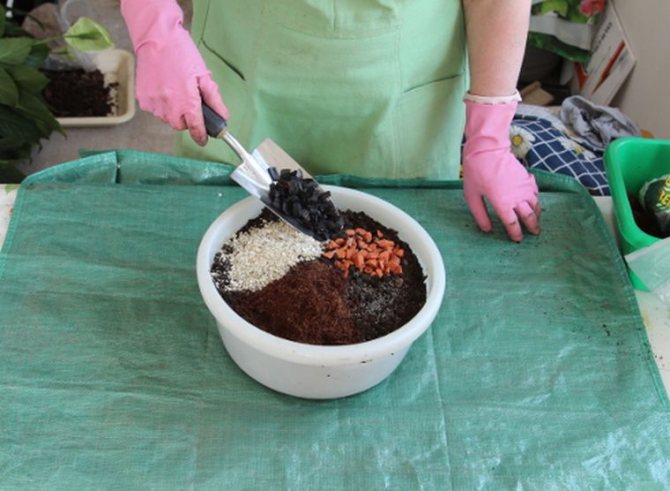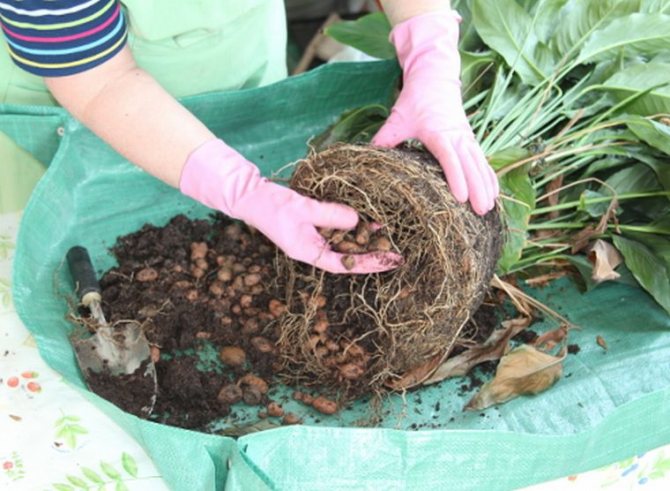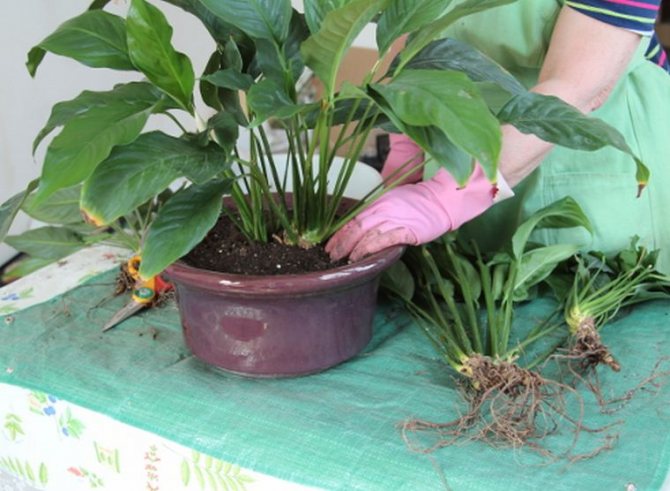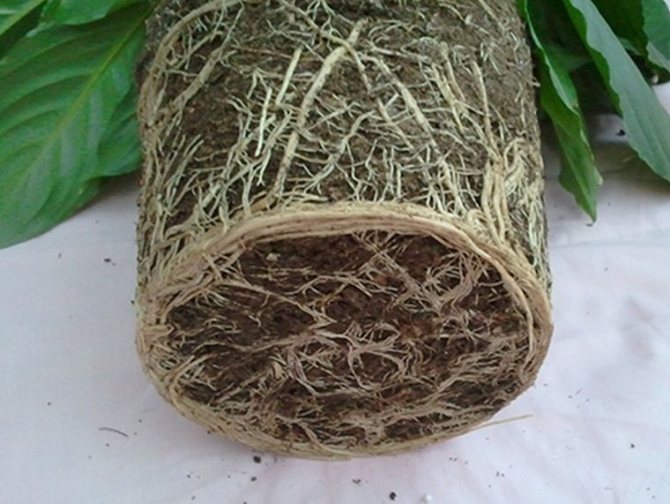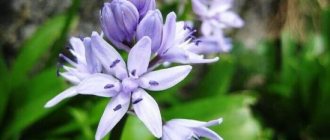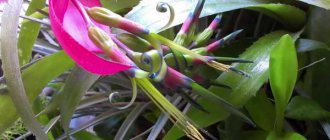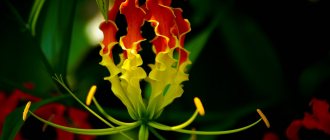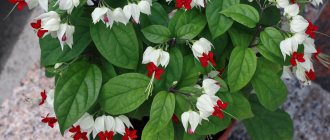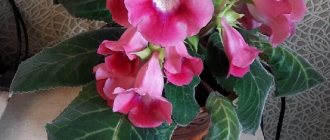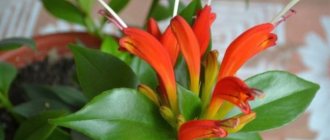There is an opinion that only decorative deciduous plants can be kept on northern or dimly lit windows, which grow beautiful foliage, but do not bloom. We can say that this is true. But only partially. Among the huge variety of flowering species, there are also those that are completely undemanding to sunlight. A bright representative of this shade-tolerant group is the spathiphyllum from the aroid family. He dissolves on long arrows snow-white or green bracts with an ear in the center. Unusual sail-shaped flowers rise above the emerald green shock of leaves - very elegant! And it is durable - on average, the flowering of spathiphyllum lasts about 2-3 months without interruption. And there are frequent cases of repeated flowering (for example, in spring and, again, in autumn). Would you like to know how to care for spathiphyllum? Let's try to figure it out.
Description
The homeland of the spathiphyllum from the Aroid family is the tropical forests of Central and South America and some regions of Southeast Asia. The main species are distributed in Brazil, Colombia, Guyana, Trinidad, Venezuela, and the Philippines. A characteristic feature of the plant is a pearly white leaf with a yellowish cob-shaped inflorescence in the center.
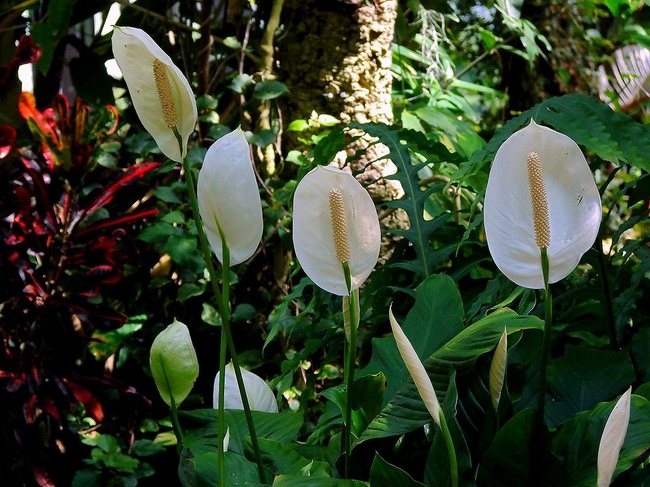
Spathiphyllum in the tropics
Large leaves have a rich dark green color and shine. The central stripe and lateral veins are noticeably distinguished on them. They reach up to 20 cm in size and are located on long petioles.
Bloom
If Spathiphyllum is doing well, but not perfect, it will produce many new leaves, but it will not bloom. When, with good care, flowering does not occur throughout the year, you should think about a new place for the plant, the old one may be too dark, despite the diffused light. The Russian sun simply does not have the strength of the tropical. In addition, the architectural features of the building (small windows, etc.) may be affected.
Important! The weak morning sun will not cause leaf burns, so it is possible to place the spathiphyllum flower in direct sunlight in the morning. This sometimes solves the problem.
The type and shape of the flower
What appears to be a large flower petal in spathiphyllum is actually not. It is a modified leaf, a bract that turns white at maturity. Over time, the bract turns slightly green. In different types of spathiphyllum, it may differ slightly in shape: it can be more elongated, spoon-shaped, curled in the shape of a cone, etc. The inflorescence is the central ear of yellowish tones.
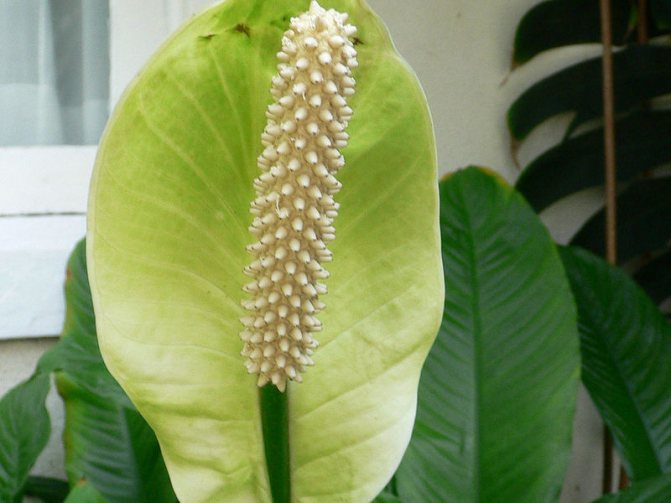

Spathiphyllum flower
Plant care during the flowering period is characterized by an active watering and feeding regime.
Natural conditions
To understand how to successfully grow "female happiness", you should familiarize yourself with the conditions in which this plant grows in nature. Spathiphyllum is native to the South American and Malaysian rainforests. Favorite growing places are flooded or swampy areas, the banks of reservoirs.
That is, in the usual habitat - high air humidity, loose and damp slightly acidic soil. In such conditions, "female happiness" successfully grows and blooms. And what is the conclusion from this? What soil is suitable for spathiphyllum? In the natural environment, the soil contains fallen leaves, rotten branches, charcoal and compost.Based on this knowledge, you can make your own nutritional formula.


Common species and varieties
Spathiphyllum domino flower - home care
In total, there are about 50 plant species in the world. Most of the domestic varieties are hybrids derived from Spathipyhllum floribundum and Spathiphyllum wallisii. Hybrid varieties are more hardy and long-flowering. Some varieties of indoor spathiphyllum:
- Spathiphyllum Chopin. Its compactness and decorativeness have provided the plant with wide popularity. Leaves are bright green, elongated bracts, with a greenish tint;


Spathiphyllum Chopin
- Spathiphyllum Sensation. One of the largest species, bred in Holland. Height - up to 1.5 m. Sizes of dark green leaves: length - 70-90 cm, width - 30-40 cm. The length of inflorescences with bracts can reach 50 cm. Ear with a smoothed surface. It tolerates darkening better than other spathiphyllums.
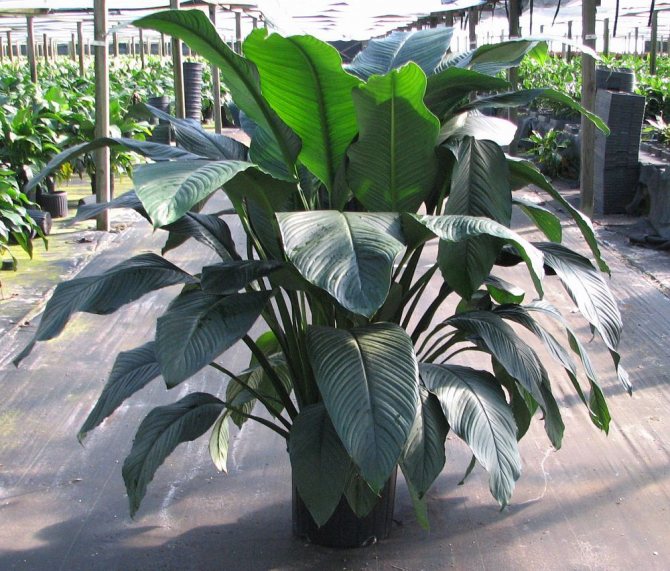

Spathiphyllum Sensation
Important! Signs of a lack of light - the leaves turn pale, flowering stops.
- Dominoes. Low decorative variety with variegated leaves (white strokes on a green background). Inflorescence is greenish or yellowish-white in color. The strong aroma disappears at night. Domino's dimensions are average: height - 50-60 cm, leaf length - up to 20 cm, width - up to 10 cm;
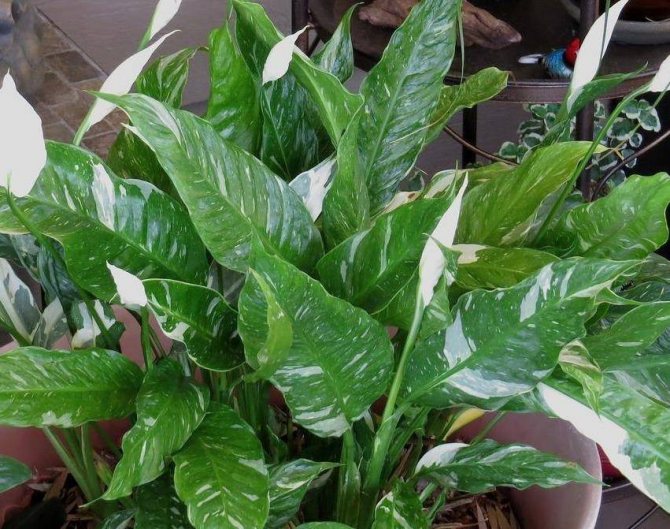

Spathiphyllum Domino
- Picasso. This relatively new variety is also bred in the Netherlands from Spathiphyllum wallisii. Green and white stripes alternate chaotically on the leaves. Requires good light for healthy growth;
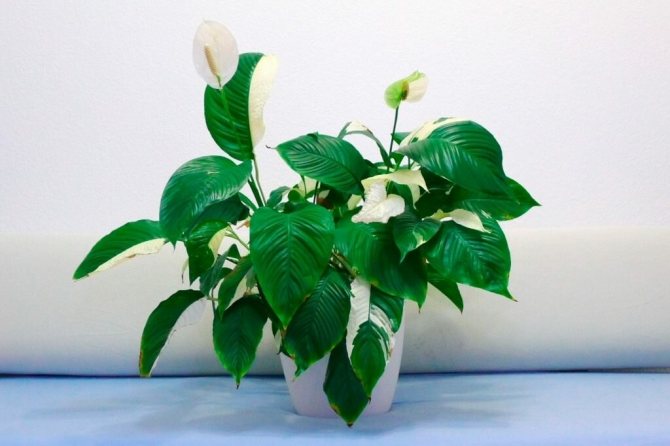

Spathiphyllum Picasso
- Spathiphyllum floribundum. Plant height - up to 50 cm.The dimensions of light green leaves with a wavy edge: length - 13-20 cm, width - 9.6 cm.The peduncle grows up to 25 cm.White bracts: length - 4-8 cm, width - 1, 5-3 cm. The length of the cob is 2.5-5 cm. Abundant flowering almost all year round. Cut flowers can be stored in water for up to 2 months;
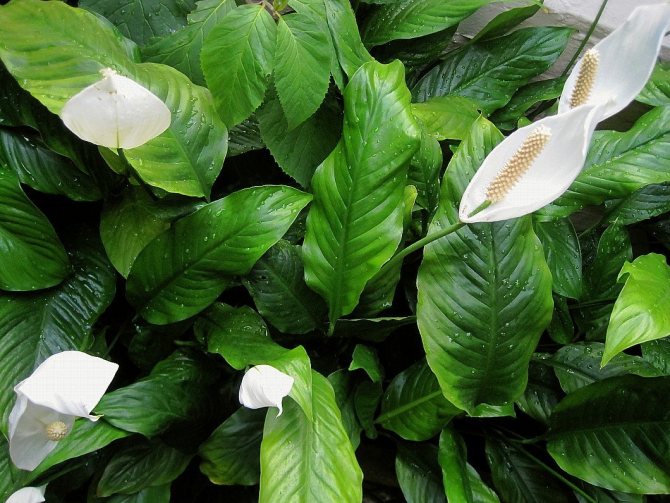

Spathiphyllum floribundum
Important! Spathiphyllum is moderately toxic. The calcium oxalate contained in the leaves can cause burns if it gets on the mucous membranes and in the respiratory tract.
- Mauna Loa. A large hybrid that reaches almost 1 m in height. Bred by US breeders from Spathiphyllum Floribundum. Leaves with pointed tips, flowering continues almost throughout the year.
Women's happiness in the house. Benefits
- According to signs and beliefs, the power of the plant lies in the invisible creation of strong family ties, well-being in the house, and assistance in the successful bearing of a child.
- Beauty and presentability. The plant with bright green leaves will perfectly fit into any interior and fill the house with fresh air.
- If you take good care of your friend, there will be harmony and grace in your family.
- The houseplant knows its owner, so your care and warmth will be generously rewarded.
Features of home care
Spathiphyllum home care does not require particularly difficult, however, without proper care, the plant will not look so attractive.
Temperature
Campanula flower - home care
The optimum temperature range for Spathiphyllum is 18-25 ° C. In summer, the temperature in the room with a flower should be 20-25 ° C, in winter - 18-20 ° C. At temperatures below 14 ° C, the plant may die. When the room temperature drops below 18 ° C, growth slows down significantly.
Important! From the cold, diseases appear in spathiphyllum, the leaves may begin to turn black.
Lighting
When caring for spathiphyllum, it is necessary to provide sufficient lighting. In winter, the plant requires more light. In summer, it should be diffused, since direct sunlight can cause leaf burns.
Watering
A tropical plant loves good hydration. In the summer, the regularity of watering is 2-3 times a week. In this case, it is necessary to pay attention to the condition of the soil. Its top layer should dry out, but moisture remains in the depths. Too abundant watering is unacceptable. The water must not stagnate.
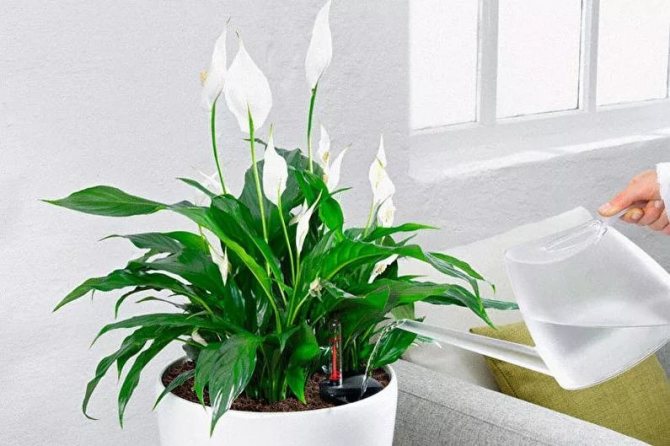

Watering spathiphyllum
Water for irrigation is soft, at room temperature. Rainwater or standing tap water will do.
Spraying
Watering the plant must be supplemented with spraying. This can be done daily in the summer.A warm shower is also helpful, but be sure to keep water away from the bracts.
Important! A warm shower can be arranged only half an hour after watering. After the procedure, the frequency of spraying should be reduced. The plant grows stronger, new leaves and flowers are formed on it.
Humidity
High humidity is a prerequisite for good spathiphyllum health. But it must be coordinated with the air temperature. At low temperatures, the humidity should be reduced, at high temperatures, increased.
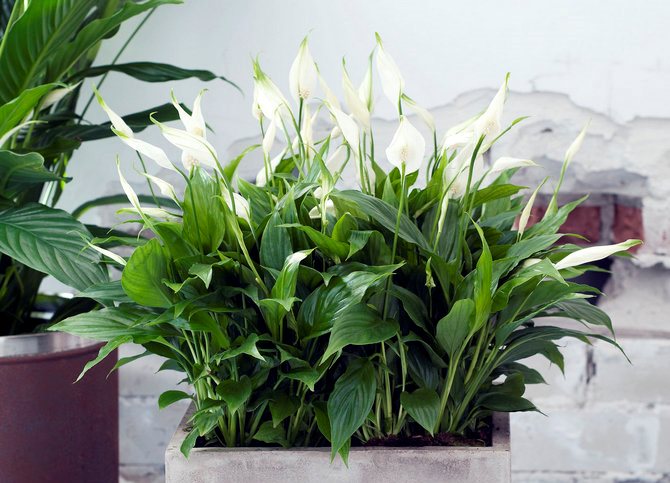

Lush bush in a flowerpot
In winter, it is recommended to keep the plant away from heating appliances. As an additional humidification of the air environment, containers with water are placed next to the plant.
Priming
The flower does not tolerate stagnant water or excessive drought. Therefore, good drainage should be organized at the bottom of the pot, for which pieces of foam, pebbles, and small ceramic fragments are suitable.
What soil is ideal for spathiphyllum? Light and loose, with a slightly acidic environment. You can buy ready-made soil for tropical or aroid plants, as well as compose yourself. To do this, take peat, leaf and sod land, humus, sand in equal parts.
Top dressing
It is necessary to take care of the land for spathiphyllum by making top dressing. This is a mandatory measure so that the plant receives all the necessary trace elements.
Fertilizer should be liquid and contain potassium and phosphorus. It should be fed during the active period every two weeks. In winter, feeding stops or, if the room is warm enough, it is done no more than 1 time per month.
Basic recommendations for fertilization:
- Top dressing is effective on warm days and in bright rooms;
- It is not recommended to fertilize immediately after purchasing a plant; it will take a couple of months to adapt;
- Newly transplanted flowers cannot be fed;
- The fertilizer solution should not get on the leaves of the plant;
- Water the flower before feeding to prevent damage to the root system.
Important! Make sure that nitrogen does not predominate in the fertilizer, otherwise the plant will stop blooming.
Winter care
There are a number of rules on how to care for spathiphyllum in winter. In winter, during the dormant period, when the temperature drops to 16 ° C, frequent watering should be stopped. This happens once a year and continues for several weeks. A rest period with lower temperatures and less water is needed for the plant.
Sometimes you can find recommendations to keep spathiphyllum for several weeks with reduced irrigation and not fertilize. Then feed, start watering abundantly and fertilize more often.
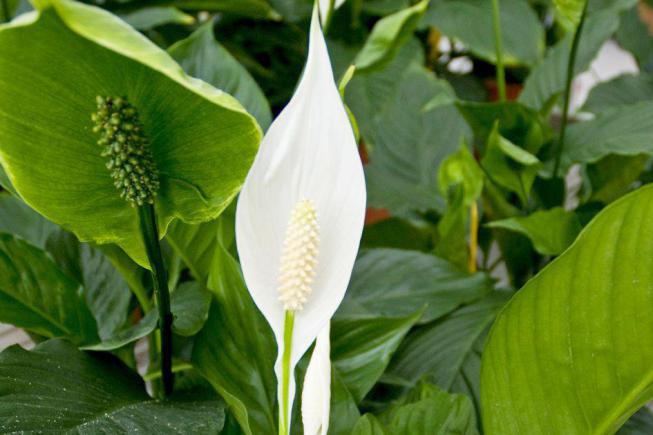

Lauretta variety
Presumably this should stimulate flowering, because doing so mimics a tropical winter with less rain followed by a wet, nutrient-rich spring. Such home care for a flower, female happiness, reproduces the natural living conditions of the plant, taking into account the annual rhythm.
Pruning
The plant does not require pruning, except for the removal of dead leaves and flowers.
Diseases, pests and ways to control them
Despite the fact that spathiphyllum is a flower with good immunity, growers may still face some difficulties when growing it. As for pests, the danger to the flower is represented by:
- spider mite;
- mealybug;
- aphid.
Getting rid of pests is very simple. Regardless of which parasite attacked the plant, you should spray it with plain soapy water or insecticides.
If watering is incorrect, the flower may have problems with the root system. Blackening leaves will testify to them. For treatment, you must immediately remove the flower from the pot and remove all rotting roots.After that, treat healthy rhizomes with coal powder and transplant into new soil.
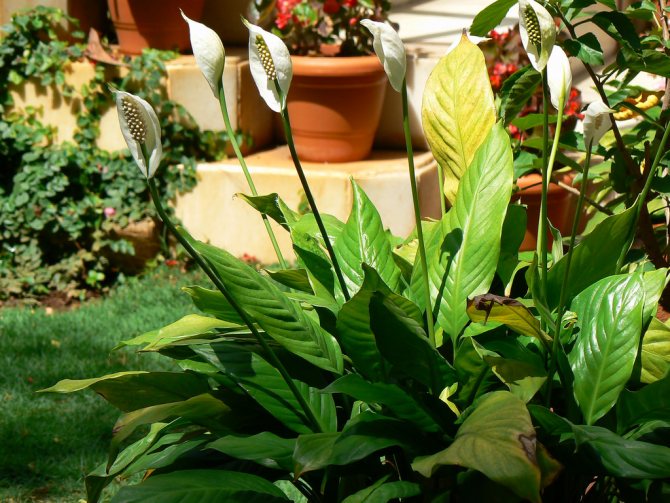

Spathiphyllum in landscape design
In indoor floriculture, spathiphyllum is very popular. The flower not only stands out for its chic appearance, but also differs in unpretentiousness in care. Both experienced florists and beginners can easily take care of spathiphyllum. Observing simple rules for care, the plant will delight its owner with a long and lush flowering. In this case, the flower will decorate any room, regardless of its purpose. And to achieve greater effect, it is recommended to place female happiness next to male anthurium.
Reproduction
The secret of success in the reproduction of spathiphyllum depends on the choice of its method. The most laborious method, which, moreover, does not give a guarantee to grow a young individual, is to propagate with the help of seeds. In total, three breeding methods are known:
- germination of seeds;
- dividing the bush;
- rooting of cuttings.
Germinating seeds
Important! The germination rate of spathiphyllum seeds is highly dependent on their freshness. When buying planting material, you should pay attention to the date of their collection.
Experienced growers prefer to collect seeds themselves, which increases the likelihood of germination. To obtain seeds, it is necessary to artificially pollinate the flowers.
Procedure for germinating seeds:
- Pour the steamed substrate from a mixture of sand and peat into the planting container;
- The soil should be slightly damp. The seeds are sown and slightly pressed or sprinkled with soil from above;
- The container is covered with foil and placed in a warm place at a temperature of about 25 ° C. It is necessary to ensure that the soil does not dry out, periodically moistening it;
Important! The ground under the film must be ventilated daily.
- After the sprouts appear, the film is removed on the 5-7th day;
- When the sprouts have thrown out the first leaves, they can be transplanted into separate pots.
Rooting cuttings
Young leaves sprout from the ground next to mature leaves. They will become cuttings if they are separated and removed from the soil. The separation is made with a sharp cutting instrument, which is pre-disinfected. The movement of the knife should be quick and short.
Sometimes the cuttings have no roots. Then they are kept in water until roots appear. The stalk with roots must be planted in the ground, previously warmed up in the oven. A drainage layer is laid at the bottom of the flower container.
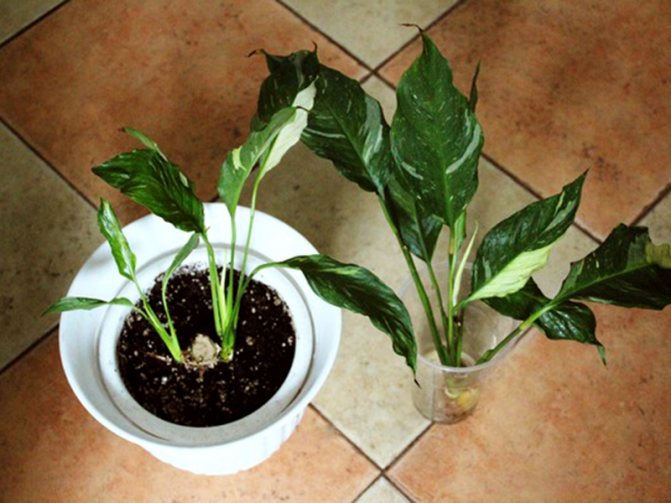

Planting cuttings of spathiphyllum
The pot with the plant is placed in a warm (temperature over 21 ° C), slightly shaded place. One or two days after planting, you can only spray the sprout, then carefully proceed to watering, keeping the soil moist, but without excess water.
Dividing the bush
It is the most successful method. As the plant ages, it forms a strong rhizome that can be cut with a sharp knife. Each part must have at least 3 sheets forming a rosette. Rotten roots are pruned.
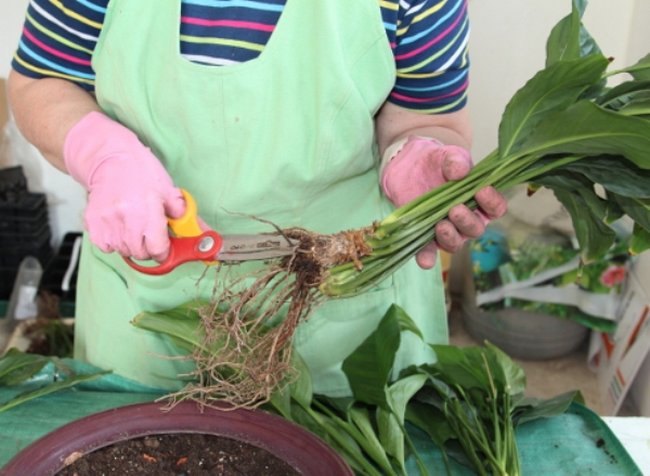

Division of the rhizome of spathiphyllum
The cuts are processed with coal. The individual parts are planted in pots and watered vigorously. During the first three months of growth, they are not fertilized.
Important! To preserve the strength of the plant, it is advisable to divide it every 3-4 years, combined with transplants.
Spathiphyllum - signs
Women's happiness is an unusual flower. It got its beautiful name thanks to the goddess of love, who gave the flag leaf part of the happiness experienced on the wedding day. According to legend, Astarte endowed the flower with the ability to give her mistress harmony in a relationship.
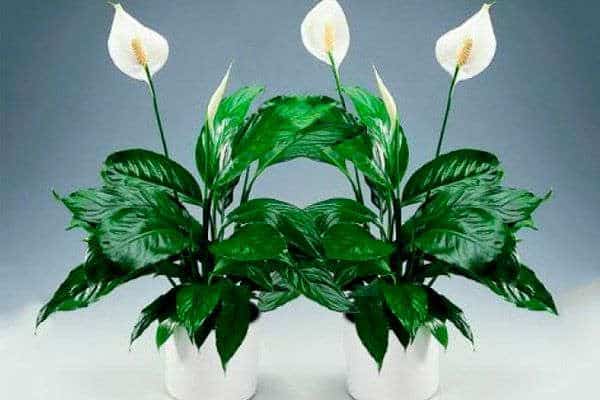

There is a sign that a donated flower will help you find a worthy husband, create a strong family.They say that female happiness helps to have a baby, especially if you get a layering from a family where a baby has recently appeared. Spathiphyllum helps to strengthen family ties, achieve complete harmony in relationships, relieves jealousy and negativity in relationships. Anthurium will make an excellent company for women's happiness, but you don't need to plant them in one pot, as some advise. Two exotic species from the same family have different substrate requirements.
In addition to the sacred meaning, a green pet is extremely beneficial for the environment. It absorbs harmful compounds like formaldehyde, xylene, carbon dioxide and recycles them into food. Green growth on the window saturates the air with oxygen, releases phytoncides that can destroy pathogenic microflora.
Important! The sap of a room dweller is poisonous. Protect your hands with gloves when transplanting and keep the lush bush out of the reach of children. Animals are rarely interested in this herb because it tastes so bitter.
Transfer
Spathiphyllum blooms only when the pot is somewhat tight. In a large pot, all his strength goes to the development of the root system. When it fills almost the entire volume, peduncles are thrown out. A young plant needs an annual transplant. Moreover, each time the diameter of the pot should be 2-3 cm larger.
In an adult spathiphyllum, the number of transplants is reduced to one in 3 years. The time of the procedure is spring, at the end of the dormant period and before the beginning of flowering.


Spathiphyllum transplant
Step-by-step actions:
- Water the plant a little and carefully remove it from the previous pot;
- Clean the roots with light strokes. Rotten and very long - cut off;
- Move the spathiphyllum into a new pot with a drainage layer and a small amount of soil, sprinkle with a substrate on top and press lightly so that the flower sits tightly;
- In the first days after transplanting, moderate watering and frequent spraying are recommended. Then the usual care is restored.
Why spathiphyllum does not grow reasons
The reason for the inhibited development of culture can be a lack of nutrition. This is especially true for young specimens that need a lot of nitrogen. Severe light deficiency also inhibits growth.
The lack of visible development is observed with too large a flowerpot. While the above-ground part practically does not give growth, a powerful root system grows under the ground.
On a note! The flagleaf will start to grow after rooting all the soil provided.
Growing problems
Spathiphyllums are very hardy and relatively immune to pests. But they do not resist drafts and strong room smoke. Typical signs of diseases and treatment options:
- Leaves turn pale. This comes from a lack of light. It is necessary to increase the illumination;
- Sheds leaves and buds. The pot is not cramped enough, little light, no fertilizer. Containment errors should be corrected;
- The tips of the leaves dry. Air is too dry. Perhaps there are heating devices nearby, then the flower is transferred to another place. It is also treated with frequent spraying;
- Brown spots on the surface of the leaves. This is a sign of over-fertilization. The plant needs a transplant;
- Why do the lower leaves turn yellow or black, then fall? This is often caused by over-watering, resulting in root rot. The irrigation regime should be changed. Another reason is a lack of nutrients, the plant needs to be fed;
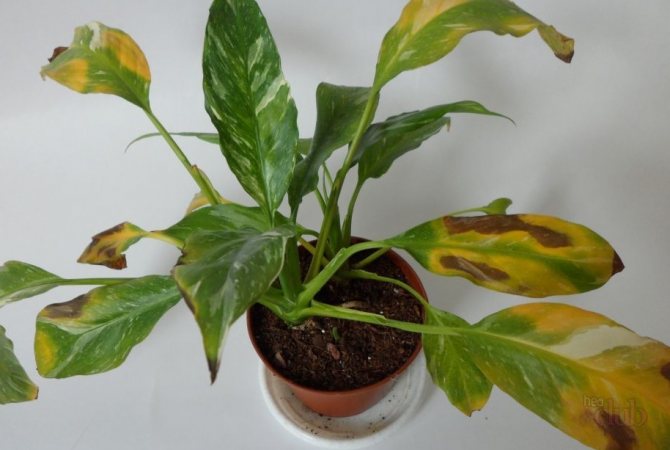

Damaged spathiphyllum leaves
- If the leaves partially darken and a web appears, the plant has been attacked by pests.
Spathiphyllum is most often attacked by spider mites and aphids. It is necessary to carefully examine the leaves. If harmful insects are found, treat the plant with insecticides.
About the plant
Translated from Greek, the name of the flower comes from 2 words and means a flower with a veil.Indeed, the plant has an unusual shape, presented in the form of an inflorescence - an ear framed by a blanket of white, green or cream tones.


The ear itself has a varied color, up to a red hue. It is a stemless plant with a short rhizome and tough leaves emanating from the ground. Typical for tropical areas. It belongs to the order of aroid plants, once brought from tropical Colombia.
According to legend, a house with spathiphyllum is not in danger of female loneliness and, in general, the signs associated with this flower are mostly positive. It is believed that the flower has magical properties:
- unmarried girls meet their betrothed;
- peace and harmony reign between spouses;
- in families where there were no children, a priceless gift appears - a child.
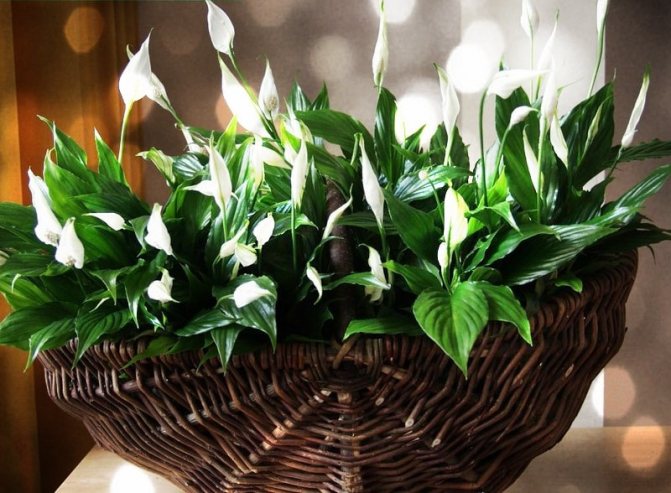

Outwardly, spathiphyllum is an ordinary flower. It becomes extraordinary thanks to caring, loving hands that are able to work miracles, prompting the plant to bloom. Flowers are formed as the fulfillment of a secret desire.


